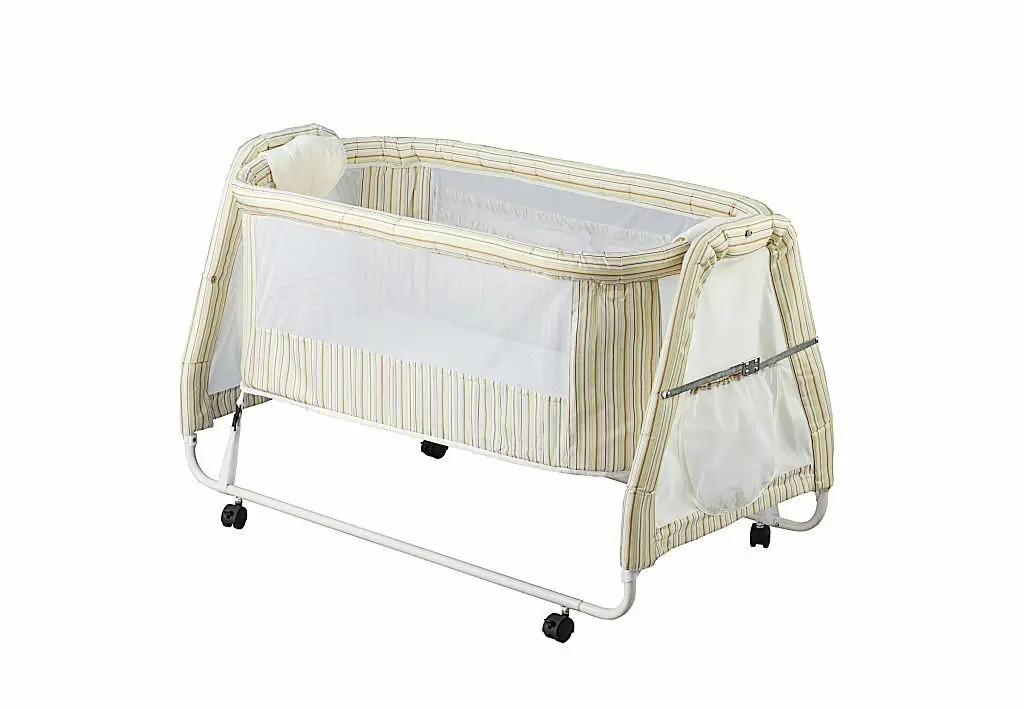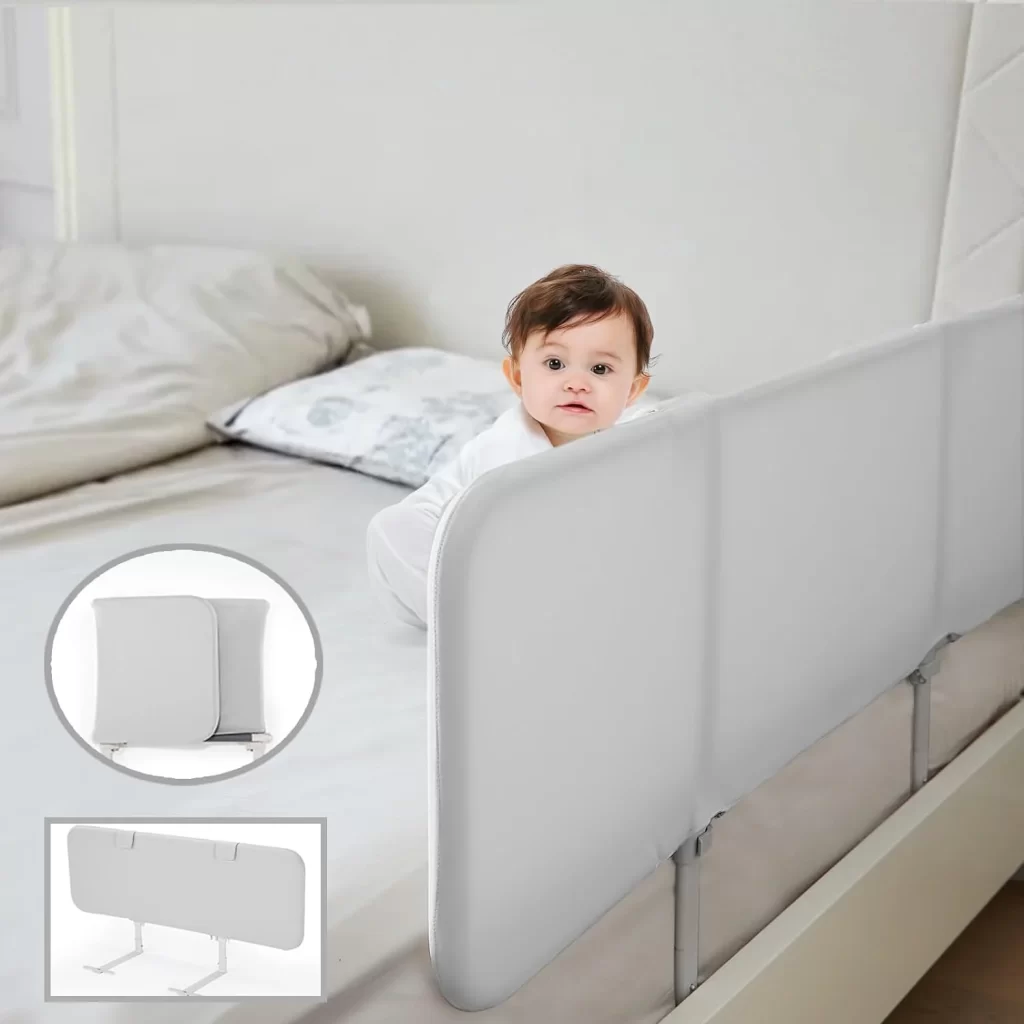Best Crib Alternatives for Your Baby

Your baby is growing up fast! At six months old, your little one is becoming more mobile and aware of their surroundings. While moving them into a big kid bed may be tempting, most babies are not ready to transition until closer to a year old or later. A crib is still the safest sleep option, but you have several options if you’re looking for some crib alternatives for your active 6-month-old.
Why Your 6-Month-Old Still Needs a Crib
Before exploring crib alternatives, it’s important to understand why your baby still needs a crib at this age. Here are some key reasons to continue using a crib:
Safety
Cribs are designed for safety. With high, solid sides and a firm mattress that fits snugly against the edges, a crib prevents your baby from rolling or falling out. Cribs also have no soft bedding or toys that could pose a suffocation risk.
Sleep Associations
By six months, most babies are used to falling asleep in their crib and find it comforting. Switching to a new sleep space could disrupt their sleep patterns.
Containment
An enclosed crib keeps your mobile baby safely contained during naps and overnight. Without the crib sides, they may roll around or try to crawl out of bed.
So while you may start pondering a big kid bed down the road, your 6-month-old still needs their familiar, safe crib. Next, look at some crib alternatives for playtime and special circumstances.
Play Yard
A play yard, also known as a playpen, is a great way to give your 6-month-old a safe space to play and explore during the day. Look for a model with mesh sides that allows you to keep an eye on your baby. Some play yards have naptime features like bassinets, changers, and mobiles.
Safety Tips
- Only use play yards with side locks to prevent collapse.
- Never leave a baby unattended.
- Don’t use soft bedding that could be a suffocation hazard.
- Follow all weight limits and use the instructions.
Fun Activities
Fill your baby’s play yard with engaging toys and activities like soft blocks, board books, and ball pits. This space is great for tummy time, rolling practice, and early crawling. You can also use it to contain babies during chores like cooking, cleaning, or home office work.
Portable Crib

A portable crib can be useful for travel or for creating a second sleeping space in your home. Many portable cribs now meet the same safety standards as full-size cribs and feature conveniences like multiple height adjustments and wheels. When shopping, look for “JPMA certified” to ensure safety.
Key aspects to look for in a portable crib:
- Sturdy construction that won’t collapse when baby stands up
- Snug-fitting mattress with no more than two finger-width gaps
- It does NOT have drop-down sides, which is unsafe.
A portable crib allows you to provide a familiar sleep environment for naps or overnight when you’re visiting family or on weekend trips. Just be sure to childproof the room it’s used in.
Travel Bedrail

A travel bedrail can allow your 6-month-old to sleep safely in an adult bed for occasional overnight trips. These rails surround babies on three sides and help prevent them from rolling out of bed. Some models inflate for portable use.
Keep in mind:
- Never use in a toddler bed, as the baby may fall over the lower rails
- Please don’t use it in place of a crib at home.
- Still, avoid soft bedding that could lead to suffocation.
- Ensure you have a snug-fitting sheet that won’t come loose.
With proper precautions, a travel bedrail can give your little one secure boundaries when sleeping away from home. Just be sure to watch them at all times.
Baby Hammock

Baby hammocks suspended from a stand or fixed point allow your infant to rock gently, which some babies find soothing. However, there are some important considerations with hammock use:
- Only safe once baby can roll over on their own (typically 4-6 months)
- Avoid letting baby sleep unattended in a hammock due to sudden infant death syndrome (SIDS) risks
- Ensure a stable installation and check for recalls
- Use a sleep sack instead of a loose blanket for warmth
During supervised playtime, a hammock can entertain your wiggly 6-month-old. But traditional cribs or portable cribs are the only recommended options for unsupervised sleep.
Baby Box

A baby box is a cardboard bassinet that provides a safe, enclosed sleeping space. The Baby Box Co. boxes meet safety standards and have a firm mattress and sheet.
Key features:
- Sturdy construction won’t collapse
- It allows you to provide the baby with a separate sleeping space.
- Often used for naps or overnights early on
- Offer a cost-effective and portable option
Just be sure to transition the baby to a crib before they can push up or rollover. The firm mattress and enclosed sides keep infants snug and secure.
Sidecar Crib

This involves attaching your crib up against the side of your bed to allow easier access to the baby during the night. You’ll lower the adjacent crib rail to make one continuous sleep surface.
Benefits:
- Easy to access and comfort baby at night
- It helps babies transition into their own crib over time
- It allows you to maintain some separation for safety.
Keep in mind that you’ll need to take precautions against your baby rolling into any dangerous gaps. And always put babies to sleep in their own sleeping space.
In-Bed Co-Sleeper

Co-sleepers or bedside bassinets attach right to your bed, allowing the baby to sleep within arm’s reach. Look for a model with high, rigid sides and breathable mesh.
Great for:
- Keeping baby close for breastfeeding at night
- Maintaining your bed as a safe adult sleeping space
- Slowly transitioning baby into their crib.
While convenient, any in-bed product comes with risks. Be sure to read safety guidelines to reduce the risk of suffocation or entrapment.
When to Transition From the Crib
While your 6-month-old should remain in their crib for naptime and overnight, you may start thinking about a transition between 9 and 12 months. Signs your baby is ready for a toddler bed or crib mattress on the floor include:
- Pulling up and standing while holding the crib rail
- Attempting to climb out of the crib
- Developmental readiness for more independence
There is no set timeline, so base the change on your baby’s behavior and needs. You can facilitate the transition with toddler bedtime rail guards to prevent falls. But keeping the baby in the crib as long as possible ensures the safest sleep environment.
Give Your Baby More Room to Grow
At six months, your little one is just starting to discover the world around them. A traditional crib is still the best way to protect them during sleep while allowing more freedom for playtime. While you may start researching toddler beds, you likely have several more months before a crib transition. Focus on safely nurturing your baby’s curiosity and independence by providing a secure base to grow. The rest will come in time!
Also Read:
- How Do You Hang Wall Decor in a Nursery
- How Often Should Baby Bedding Be Changed
- How Long Can You Use a Mini Crib?
Crib alternatives for 6 month old: Conclusion
Your baby is growing more aware and mobile daily at six months old. While it can be tempting to transition them to a “big kid” bed, remember that your infant still needs the safety and security of their crib during this stage. A traditional crib with a snug-fitting mattress and bare sleep environment is the best way to protect your little one overnight and during naps.
During supervised playtime, products like play yards, baby hammocks, and portable cribs can provide safe spaces for your active baby to explore and develop new skills. Focus on following all safety guidelines and trusting your parental intuition. With time and patience, you’ll know when your baby is ready to graduate from the crib. Until then, enjoy witnessing your baby learn and thrive in the comfort of their secure crib surroundings.
